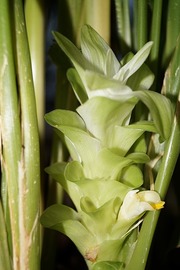webmd.com
Always private
DuckDuckGo never tracks your searches.
Learn MoreYou can hide this reminder in Search Settings
All regions
Argentina
Australia
Austria
Belgium (fr)
Belgium (nl)
Brazil
Bulgaria
Canada (en)
Canada (fr)
Catalonia
Chile
China
Colombia
Croatia
Czech Republic
Denmark
Estonia
Finland
France
Germany
Greece
Hong Kong
Hungary
Iceland
India (en)
Indonesia (en)
Ireland
Israel (en)
Italy
Japan
Korea
Latvia
Lithuania
Malaysia (en)
Mexico
Netherlands
New Zealand
Norway
Pakistan (en)
Peru
Philippines (en)
Poland
Portugal
Romania
Russia
Saudi Arabia
Singapore
Slovakia
Slovenia
South Africa
Spain (ca)
Spain (es)
Sweden
Switzerland (de)
Switzerland (fr)
Taiwan
Thailand (en)
Turkey
Ukraine
United Kingdom
US (English)
US (Spanish)
Vietnam (en)
Safe search: moderate
Strict
Moderate
Off
Any time
- Was this helpful?
- Turmeric is a common spice that comes from the root of Curcuma longa. It contains a chemical called curcumin, which might reduce swelling. Turmeric has a warm, bitter taste and is frequently used ...
healthline.com
Nov 27, 2023Turmeric is a traditional Indian spice with a powerful compound called curcumin. Here are the top 10 health benefits of turmeric and curcumin.en.wikipedia.org
Turmeric (/ ˈ t ɜːr m ər ɪ k, ˈ tj uː-/), [2] [3] or Curcuma longa (/ ˈ k ɜːr k j ʊ m ə ˈ l ɒ ŋ ɡ ə /), [4] [5] is a flowering plant in the ginger family Zingiberaceae.It is a perennial, rhizomatous, herbaceous plant native to the Indian subcontinent and Southeast Asia that requires temperatures between 20 and 30 °C (68 and 86 °F) and high annual rainfall to thrive.pmc.ncbi.nlm.nih.gov
pmc.ncbi.nlm.nih.gov
https://pmc.ncbi.nlm.nih.gov › articles › PMC8990857
Graphical Abstract. Keywords: Curcuma longa, curcumin, phytochemical, pharmacology, toxicology Abstract. Curcuma longa Linn. (C. longa), popularly known as turmeric, belongs to the Zingiberaceae family and has a long historical background of having healing properties against many diseases.In Unani and Ayurveda medicine, C. longa has been used for liver obstruction and jaundice, and has been ...britannica.com
7 days agoTurmeric (Curcuma longa) is a tropical herb with yellow-orange rhizomes that are used as a spice, dye, and medicine. Learn about its origin, uses, production, and health effects, including lead contamination.Author:The Editors of Encyclopaedia Britannicahealth.harvard.edu
Mar 22, 2024Learn about the potential health benefits of turmeric, a spice derived from the Curcuma longa plant, and its active compound curcumin. Find out how to incorporate turmeric into your diet and what to consider before taking turmeric or curcumin supplements.- Videos for Curcuma longa0:03Was this helpful?
planetayurveda.com
Turmeric (Curcuma longa) is perennial herbaceous plant that grows up to 1mt in height. Leaves of this plant are alternate, smooth, green, tapering at both ends and arranged in the pair of two. Leaves are further divided in leaf sheath, leaf blade and petiole. A false stem is arising from the leaf sheath and leaves are about 2 feet in length.sciencedirect.com
Curcuma longa is a tropical herb with various medicinal and culinary uses. Learn about its active compounds, pharmacological effects, and applications in different fields of science.nccih.nih.gov
National Center for Complementary and Integrative Health
https://www.nccih.nih.gov › health › turmeric
1 day agoLearn about turmeric, a plant in the ginger family with a yellow rhizome used as a spice and traditional medicine. Find out what research says about its health effects, bioavailability, and safety.kew.org
Learn about turmeric, a domesticated plant with many uses and benefits. Find out its scientific profile, cultural significance, health properties, and how to grow and process it.Can’t find what you’re looking for?
Help us improve DuckDuckGo searches with your feedback
